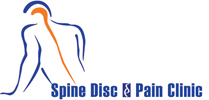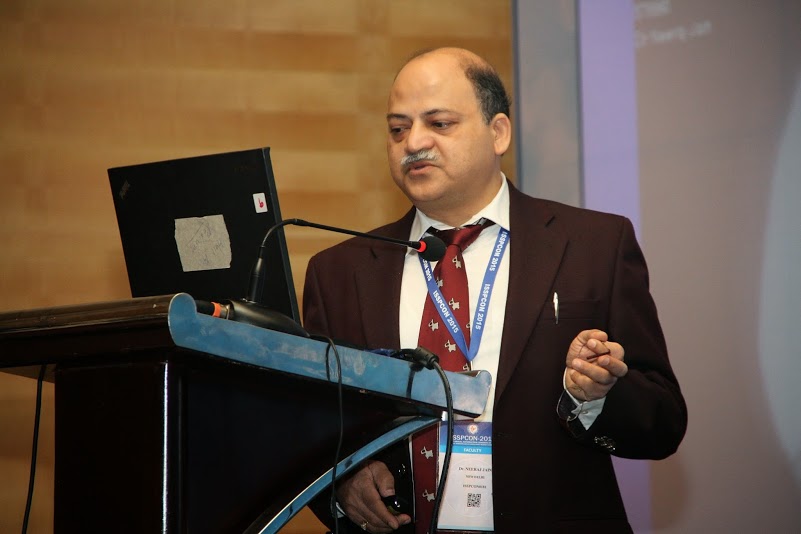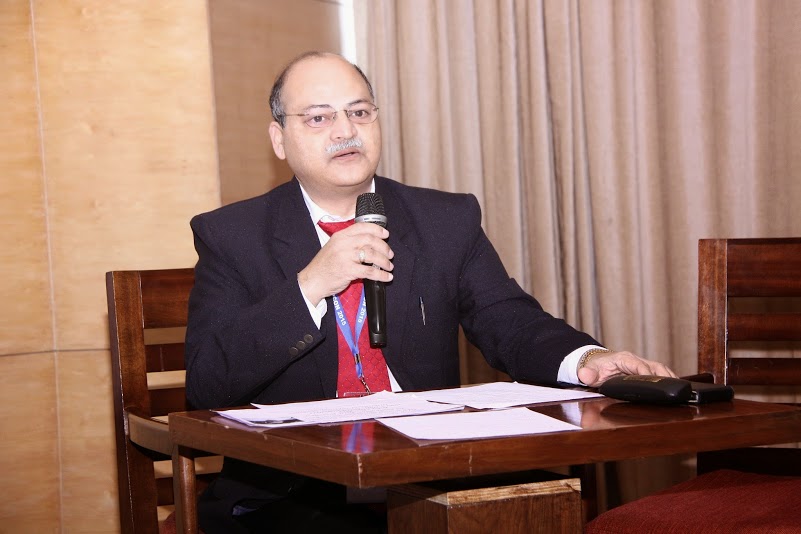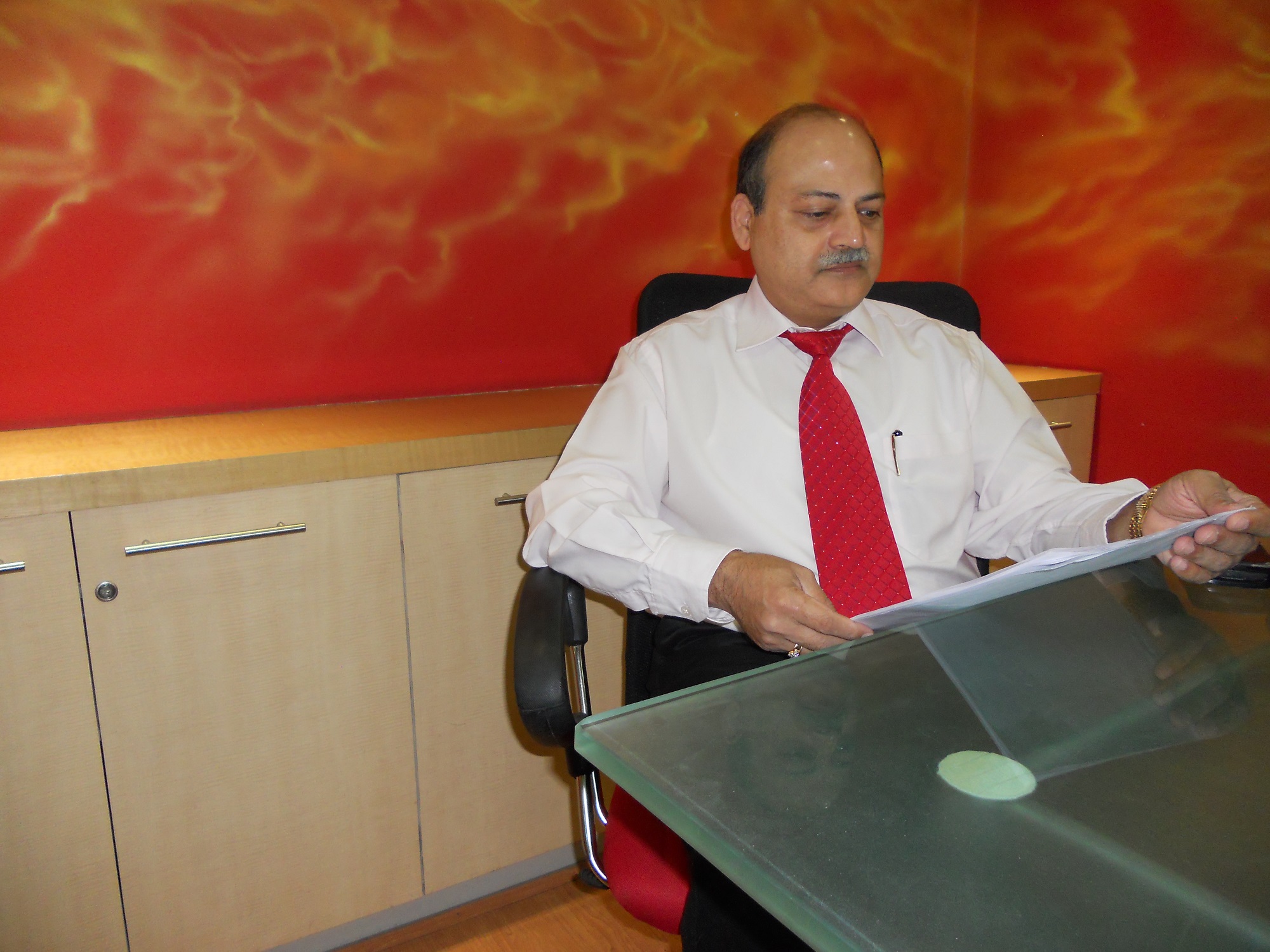Cancer Pain

Dr. Neeraj Jain
MBBS, MD, FIMSA, FIPP(USA)
For all these and many like them Dr. Neeraj Jain’s massage is “pain is real and treatable- there is no merit in suffering”. You must see a pain specialist if you still suffer from pain after a month of conservative treatment. Sooner y our pain is managed better are the overall results. Including various kinds of pain like Back pain, headache and Cancer Pain.
Experience:
Sr. Consultant Spine & Pain Specialist
Max Hospital, Pitampura, New Delhi
January 2014 – Present (2 years)
Sr. Consultant Spine & Pain Specialist
Sri Balaji Action Medical Institute
March 2007 – Present (8 years 10 months)
Sr. Consultant Spine & Pain Specialist
Spine Disc & Pain Clinics
January 2002 – Present (14 years)
Clinic Name SPINE DISC & PAIN CLINIC RU-23 Pitampura
New Delhi, Delhi 110088
India
Address SPINE DISC & PAIN CLINIC LD-122 Pitampura
New Delhi, Delhi 110088
India
Days Available: Monday-Saturday & Monday-Sunday (except Wed & Sat)
Timings 7-9 PM & 10-12 Noon
Sr. Consultant Spine & Pain Specialist
Sant Parmanand Hospital
2008 – 2014 (6 years)New Delhi Area, India
Cancer pain
Cancer Pain :Effective Pain Management
Pain is a major symptom of cancer and occurs at all stages of the disease. In addition, pain is usually a hallmark of progression or metastatic spread, and 65 to 85 percent of people with cancer have pain when they develop advanced disease. In 10 to 20 percent of cancer cases, pain is difficult to treat, frustrating, and poorly controlled. Currently, opioid pharmacotherapy is the principal weapon in the fight against cancer pain; but when less invasive treatments are unsuccessful, invasive interventions should be added to optimize pain relief. Interventional pain procedures target neural and non-neural pain generators and neural blockade techniques provide excellent pain relief for neuropathic, sympathetic, nociceptive somatic, or visceral pain. Neural blockade techniques are broadly categorized into non-neurolytic and neurolytic blocks.
The management of patients with cancer pain can be a challenging task, even for physicians trained in cancer pain management Effectively relieving pain in cancer patients requires a range of treatment alternatives, including neural blockade when the patient’s pain no longer responds to opioid analgesia. The type of neural block selected is determined by the location and mechanism of the pain, the physical status of the patient, the extent of tumor spread, and the technical skill and experience of the person performing the intervention. Non-neurolytic blocks can provide safe and effective analgesia for the less serious conditions indicated above.
Neurolytic blocks, with their potential for complications, are reserved for select patients who are unresponsive to standard analgesic pharmacotherapy and/or are at a more advanced stage of disease. However, few would question that aggressive intervention is often appropriate. Neurolytic nerve blocks offer an excellent option for the physician in the fight to control cancer pain. Such blocks can be easily utilized to help provide cancer pain relief in most of patients at the utmost needed times.
Cancer Spread All Over
Neurolytic Celiac Plexus Blocks (NCPB) And Splanchnic Nerve Blocks (SNB) are routinely performed (and are preferred over standard analgesic therapies) for patients with intractable pain from pancreatic and upper gastrointestinal cancer. NCPBs provide immediate and substantial pain relief in 70 to 90 percent of cases, improve the patient’s quality of life, and significantly reduce opioid intake. The procedure can be repeated in three to six months if the effect of the initial block wears off. NCPBs are performed percutaneously or intraoperatively. Under radiologic guidance, 50 to 100 percent alcohol is instilled anterior to the aorta at the level of the L1 vertebral body. Injection site pain, diarrhea, and temporary hypotension are transient adverse effects. A low complication rate is observed, since the risk of the neurolytic agent spreading to the somatic nerves supplying the lower limbs, bladder, and bowel is minimal.
Superior Hypogastric Plexus Blocks (SHPB) are indicated for unrelenting pain from cancer of the pelvic viscera. This plexus lies in front of the L5 and S1 vertebrae in the prevertebral space. A spinal needle is placed percutaneously in this space from the back under radiologic guidance. Excellent analgesia is reported by 70 percent of patients after a SHPB. Reductions in pain scores and opioid consumption are reported to be significant, even in patients with advanced disease. No major complications have been reported following SHPBs, although a potential risk exists for the spread of neurolytic agents to the nerve fibers controlling micturition, bowel motility, and sexual function. The SHPB block can be repeated if pain recurs. Patients who fail two consecutive attempts are candidates for intraspinal opioid analgesia.
Ganglion Impar Neurolytic Blocks relieve perineal pain from cancer of the cervix, endometrium, bladder, and rectum. The ganglion is a single, midline structure ventral to the sacrococcygeal junction and can be accessed by a midline trans-sacral approach.
Painful input from somatic and visceral structures can produce sympathetically maintained pain (SMP) that may be visceral or neuropathic in nature. Sympathetic Ganglion Neurolysis relieves SMP and improves blood flow and is used to treat pain from radiation plexopathy, phantom pain, herpes zoster, vascular insufficiency secondary to malignancy, and complex regional pain syndromes (reflex sympathetic dystrophy and causalgia), with little risk of motor or sensory loss or deafferentation pain.
The trigeminal nerve receives sensory input from the skin of the face, anterior two-thirds of the tongue, and oronasal mucosa. Anesthetic Blockade Or Chemical Rhizolysis of the trigeminal ganglion or its individual branches is indicated in orofacial malignancies with intractable head and face pain.
Neurolytic Spinal Blockade can produce profound segmental analgesia. Nociceptive input is interrupted by selectively destroying the dorsal roots and rootlets between the spinal cord and the dorsal root ganglia. The procedure is reserved for terminally ill patients with cancer who have a short life expectancy and unilateral somatic pain localized to a few adjacent dermatomes, ideally in the trunk and distant from sphincter or limb innervation. Combined with a unilateral cordotomy, subarachnoid phenol blocks effectively control pain in costopleural syndrome, which is caused by invasion of the pleural cavity and thoracic wall. Adverse effects include PDPH, meningitis (rarely), persistent numbness and paresthesia, loss of motor function due to the unintended neurolysis of ventral rootlets, and sphincter and limb weakness.
Intraspinal Opioid Therapy
Continued administration of opioids intrathecally or epidurally with or without dilute concentration of local anesthetic& adjuvant drugs is an important option for patients with thoracic, abdominal or pelvic cancer pain that is refractory to conventional pharmacologic management. Advantages include profound analgesia, often at a much lower opioid dose without the motor, sensory, or sympathetic block. However combinations of low-dose opioids given epidurally with a local anesthetic act synergistically to produce effective analgesia while decreasing the side effects. Administration can be carried out using a variety of drug-delivery systems ranging from a temporary percutaneous epidural catheter to a totally implanted system. The effectiveness of preimplantation procedure and reversibility of effect makes this an attractive treatment option.
Agonizing Cancer Pain:
Effective Interventional Pain Management
Neeraj Jain, Rajeshree Jain1
Senior Consultant Spine & Pain Specialist, Spine & Pain Clinics & Sri Balaji Action Medical Institute,
Max Hospital, Pitampura, New Delhi & Sant Parmanand Hospital, New Delhi.
1Senior Consultant Gynecologist, Max Hospital, New Delhi.
Abstract:Pain is one of the most common symptoms associated with cancer. Pain is defined as “an independent and emotional experience associated with actual or potential tissue damage or described in terms of such damage.” Cancer pain or cancer-related pain distinguishes pain experienced by cancer patients from that experienced by patients without malignancies. Pain occurs in approximately one quarter of patients with newly diagnosed malignancies, one third of patients undergoing treatment, and three quarters of patients with advanced disease. In addition, this is one of the symptoms patients fear most. Unrelieved pain denies them comfort and greatly affects their activities, motivation, interactions with family and friends, and overall quality of life. The importance of relieving pain and the availability of excellent therapies make it imperative that physicians and nurses caring for these patients be adept at the assessment and treatment of cancer pain. This requires familiarity with the pathogenesis of cancer pain; pain assessment techniques; common barriers to the delivery of appropriate analgesia; and pertinent pharmacologic, anesthetic, neurosurgical, and behavioral approaches to the treatment of cancer pain.
INTRODUCTION
Pain is most agonizing symptom of cancer, the menace. In addition, pain is usually a hallmark of progression or metastatic spread, and 65 to 85 percent of people with cancer have pain when they develop advanced disease. Residual pain is an increasing burden in cancer survivors as well. In 10 to 20 percent of cancer cases, pain is difficult to treat, frustrating, and poorly controlled. Currently, opioid pharmacotherapy is the principal weapon in the fight against cancer pain; but when conservative treatments are unsuccessful, least invasive interventions should be added to optimize pain relief. Interventional pain procedures
target neural and non-neural pain generators and neural blockadetechniques provide excellent pain relief for neuropathic, hetic,
nociceptive somatic, or visceral pain. Neural blockade techniques are broadly categorized into non-neurolytic and neurolytic blocks.
NON-NEUROLYTIC BLOCKS
Local anesthetic and corticosteriod blocks are used to treat a variety of pain syndromes. A good response to a prognostic non-neurolytic interventions usually suggest that the patient will benefit from neurolytic procedures as well. Fluoroscopic guidance improves the accuracy of these blocks and minimizes complications. Somatic, sympathetic, and neuropathic pain respond to local anesthetic injections or the continuous administration of anesthetic drugs through a catheter. Intercostal nerve blocks or interpleural analgesia are indicated in post-thoracotomy chest wall pain/intercostal neuralgia, and radiculopathy requires selective nerve root blocks or transforaminal epidural injections when non-invasive treatments fail. Sympathetic blocks and other regional anesthetic
Correspondence: Dr Neeraj Jain, Senior Consultant Spine & Pain Specialist, Spine & Pain Clinics & Sri Balaji Action Medical Institute, Max Hospital, Pitampura, New Delhi & Sant Parmanand Hospital, New Delhi. e-mail: managepain@yahoo.com www.spinenpain.com techniques are employed in sympathetically maintained pain states,ischemic pain, postherpetic neuralgia, and radiation plexopathy
NEUROLYTIC BLOCKS
Alcohol and phenol are the preferred agents for neurolytic procedures because they cause axonal degeneration within minutes and effectively interrupt the central transmission of pain impulses. Chemical neurolysis can result in immediate and total pain relief in selected patients with localized or regional pain. Opioid requirements decrease sharply, and patients on high doses of opioids will require careful tapering to avoid respiratory depression. Other indications for neurolysis are costopleural syndrome and sympathetically maintained pain in Pancoast’s syndrome. Unfortunately, potentially unacceptable side effects limit the utility of neurolytic blocks; but neurolytic blocks are still preferred over standardopioid analgesia to control intractable abdominal, pelvic, and perineal pain. The following four criteria must be met before a nerve block is considered appropriate: —Limited lifespan of three to six months —A favorable risk to benefit ratio (i.e., the block will not impair bladder or bowel function or cause limb paralysis) — A poor response to primaryantitumor treatment, which has not been able to reduce the tumor burden — A good analgesic response and acceptable side effects with prognostic blocks.
Advantages: The neurolytic blocks have the following advantages in home care by relatives of patients particularly in rural area of India: 1). Neurolytic blocks provide longer duration of pain relief. 2).Drugs and inexpensive equipment required are readily available.Elaborate equipment is not mandatory. 3). Long-term indoor ward treatment is avoided, repeated visits to the urban pain center are not required. 4). Patient can remain at home pain free even in rural areas where medical help is scarce.
Neurolytic BlockSite And Condittion treatedsatelate ganglionHead neck or arm painGasserian ganglionTrigeminal neuralgia and facial painInterpleural(thoracic sympathetic chxin)Upper -head,arms
Middle – thorax, heart, lung
Lower – abdominal organs, uterus, bladderCeliac plexus (splanchnic nerves)Pancreatitis, Hepatobiliary Cancer pain. visceral/GIT cancer pain upto trans. ColonLumbar sympatheticLower limb pain, retroperitoneal painHypogastric plexusPelvic. Perineal, urogenital painSacrococcygeal ganglion(impar, Walther)Rectal, uretheral, perineal, vaginal pain
Neurolytic Celiac Plexus Blocks (NCPB) And Splanchnic Nerve Blocks (SNB) are routinely performed (and are preferred over standard analgesic therapies) for patients with intractable pain from hepato-biliary, pancreatic and upper gastrointestinal cancer. NCPBs provide immediate and substantial pain relief in 70 to 90 percent of cases, improve the patient’s quality of life, and significantly reduce opioid intake. The procedure can be repeated in three to six months if the effect of the initial block wears off. NCPBs are performed percutaneously or intraoperatively. Under radiologic guidance, 50-100% alcohol or 6% phenol is instilled anterior to the aorta at the level of the L1 vertebral body. Injection site pain, diarrhea,and temporary hypotension are transient adverse effects. A low complication rate is observed, since the risk of the neurolytic agent spreading to the somatic nerves supplying the lower limbs, bladder, and bowel is minimal
Superior Hypogastric Plexus Blocks (SHPB) are indicated for unrelenting pain from cancer of the pelvic viscera. This plexus lies in front of the L5 and S1 vertebrae in the prevertebral space. A spinal needle is placed percutaneously in this space from the back under radiologic guidance. Excellent analgesia is reported by 70 percent of patients after a SHPB. Reductions in pain scores and opioid consumption are reported to be significant, even in patients with advanced disease. No major complications have been reported following SHPBs, although a potential risk exists for the spread of neurolytic agents to the nerve fibers controlling micturition, bowel motility, and sexual function. The SHPB block can be repeated if pain recurs. Patients who fail two consecutive attempts are candidates for intraspinal opioid analgesia
Ganglion Impar Neurolytic Blocks relieve perineal pain from cancer of the cervix, endometrium, bladder, and rectum. The ganglion is a single, midline structure ventral to the sacrococcygeal junction and can be accessed by a midline trans-sacral approach.
Painful input from somatic and visceral structures can produce sympathetically maintained pain (SMP) that may be visceral or
neuropathic in nature. Sympathetic Ganglion Neurolysis relieves SMP and improves blood flow and is used to treat pain from radiation plexopathy, phantom pain, herpes zoster, vascular insufficiency secondary to malignancy, and complex regional pain syndromes (reflex sympathetic dystrophy and causalgia), with little risk of motor or sensory loss or deafferentation pain.
The trigeminal nerve receives sensory input from the skin of the face,
anterior two-thirds of the tongue, and oronasal mucosa. Anesthetic Blockade Or Chemical Rhizolysis of the trigeminal ganglion or its individual branches is indicated in orofacial malignancies with intractable head and face pain.
Neurolytic Spinal Blockade can produce profound segmental analgesia. Nociceptive input is interrupted by selectively destroying the dorsal roots and rootlets between the spinal cord and the dorsal root ganglia. The procedure is reserved for terminally ill patients with cancer who have a short life expectancy and unilateral somatic pain localized to a fewadjacent dermatomes, ideally in the trunk and distant from sphincter or limb innervation. Combined with a unilateral cordotomy, subarachnoid alcohol/ phenol blocks effectively control pain in costopleural syndrome,which is caused by invasion of the pleural cavity and thoracic wall. Adverse effects include PDPH, meningitis (rarely), persistent numbness and paresthesia, loss of motor function due to the unintended neurolysis of ventral rootlets, and sphincter and limb weakness.
TRANS-SPHENOID PITUITARY NEUROABLATION
Very useful simple intervention with 70-80% success rate in diffuse cancers of advanced stage with multiple bony & spinal metastasis especially hormone dependent cancers not responding to all other measures
Intraspinal Opioid Therapy continued administration of opioids intrathecally or epidurally with or without lower concentration of local anesthetic & adjuvant drugs is an important option for patients with thoracic, abdominal or pelvic cancer pain that is refractory to conventional pharmacologic management. Advantages include profound analgesia, often at a much lower opioid dose without the motor, sensory, or sympathetic block. However combinations of low-dose opioids given epidurally with a local anesthetic act synergistically to produce effective analgesia while decreasing their side effects. Administration can be carried out using a variety of drug-delivery systems ranging from a temporary percutaneous epidural catheter to a totally implanted pump system.The effectiveness of preimplantation procedure and reversibility of effect makes this an attractive treatment option
Vertebroplasty for Metastatic VB #, Multiple Myeloma VB # (3%). Approximately 30% of patients with various neoplastic conditions develop symptomatic spinal metastases during the course of their illness & pain is the presenting complaint in the majority of cases.
CONCLUSION
The management of patients with cancer pain can be a challenging task, even for physicians trained in cancer pain management Effectively relieving pain in cancer patients requires a range of treatment alternatives, including neural blockade when the patient’s pain no longer responds to opioid analgesia. The type of neural block selected is determined by the location and mechanism of the pain, the physical status of the patient, the extent of tumor spread, and the technical skill and experience of the doctor performing the intervention. Nonneurolytic blocks can provide safe and effective analgesia for the less serious
conditions indicated above. Neurolytic blocks, with their potential for complications, are reserved for select patients who are unresponsive to standard analgesic pharmacotherapy and/or are at a more advanced stage of disease. However, only few would question that aggressive intervention is often appropriate. Neurolytic nerve blocks offer an excellent option for the physician in the fight to control cancer pain. Such blocks can be easily utilized to help provide pain relief in most of the cancer patients at the utmost needed times
BIBLIOGRAPHY
- Hewitt DJ. The management of pain in the oncology patient. Obstetrics and Gynecology clinics of
North America 2001;28(4):819-46. - Cohen MZ, Easley MK, Ellis C et al. Cancer pain management and the JCAHO’s pain standards:
an institutional challenge. J Pain Symptom Manage 2003;25(6):519-27. - Goudas LC, Bloch R, Gialeli-Goudas M et al. The epidemiology of cancer pain. Cancer Invest
2005;23(2):182-90. - Svendsen KB, Andersen S, Arnason S et al. Breakthrough pain in malignant and non-malignant
diseases: a review of prevalence, characteristics and mechanisms. Eur J Pain 2005;9(2):195-206. - Cleeland CS, Gonin R, Hatfield AK et al. Pain and its treatment in outpatients with metastatic
cancer. N Engl J Med 1994;330:592-596. - Martin LA, Hagen NA. Neuropathic pain in cancer patients: Mechanisms, syndromes, and clinical
controversies. J Pain Symptom Manage 1997;14:99-117. - Panchal SJ. Intrathecal Pumps. Techniques in Regional Anesthesia and Pain Management
2000;4(3):137-142.










